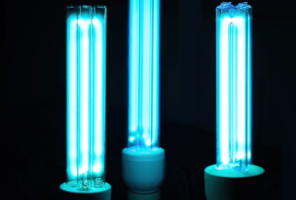
A new study says that a newly discovered ultraviolet light is said to kill almost all microbes in a room and could potentially avoid another pandemic.
The study researchers said that the new light called far-UVC could be emitted from ceiling lamps. It can kill fungi, bacteria, and viruses, including coronavirus, without causing any damage to the skin.
New UV Light Kills Microbes
In the experiments, the far-UVC took less than 5 minutes to reduce the level of indoor bacteria by 98%. Even as microbes continued to be sprayed into the room, their level remained low as long as the far-UVC lights were on and working, according to The Independent.Co.
According to the researchers, people will catch a pathogen in a room with far-UVC lamps as in an open space.
The far-UVC lamps are already available, but experts warned that some of the products are not certified.
Also Read: COVID-19: UV Light Won't Cure Coronavirus; But Scientists Say It Could Disinfect Medical Gear
The new study was conducted by scientists at the University of Dundee, University of St. Andrews, Columbia University, and the University of Leeds, and it was published in Scientific Reports.
According to the study author Professor David J. Brenner, the far-UVC can reduce the number of active microbes in the indoor air to almost zero, making the air indoor is safe as the outdoor air.
Prof. Brenner added that using the technology in locations where people gather together indoors could prevent the next pandemic.
The far-UVC light is simple to install. It is not expensive. It does not need people to make any changes to their behavior. It is also a safe way to prevent the transmission of any virus, including the COVID virus its other variants. It can also prevent the transmission of influenzas and other potential pandemic viruses.
Ultraviolet light is divided into three classifications depending on the wavelength they are UVB, UVA, and UVC.
The UVC has the shortest wavelength, and it is the most germicidal in the UV list, which means that it is the best at killing germs and damaging human skin.
UVC light has been used for years to help kill bacteria and viruses in both commercial and industrial locations like factories, hospitals, and water treatment plants.
However, conventional UVC light can't be used directly to destroy viruses in indoor spaces because it is a potential health hazard to the human skin and eyes. Thankfully, the new far-UVC light is safe on human skin.
How Far-UVC Works
The far-UVC light has a wavelength between 207 to 222 nanometers, and it is efficient in inactivating microbes without harming the human skin, according to EurekaAlert.
Far-UVC's wavelength means that it can only travel a very short distance, and it can't penetrate the layer of dead cells on the surface of the human skin, nor the tear layer covering the surface of the eyes. This means that the light can't reach the living cells in the body.
In the past years, studies have shown that far-UVC light is efficient at killing airborne bacteria and viruses, and it is safe for use around humans.
However, these studies had only been conducted in small experiments and not in full-sized rooms mimicking real-world conditions.
During the experiment, a sprayer continuously emitted an aerosol mist of Staphylococcus aureus indoors. The Staphylococcus aureus bacteria was chosen because it is less sensitive to far-UVC light than coronaviruses, giving the researchers a strong model.
Since the far-UVC successfully killed Staphylococcus aureus, it can do the same to other more sensitive microbes.
In 2020, MTA had set up UV lights that kill coronavirus in subways in New York.
During the pandemic's peak, a Japanese company released a UV light robot that could allegedly kill coronavirus in two minutes.
Related Article: Is UV Light Effective? Anti-COVID Robot Stops Demo After 10 People Gets UV Irritation From Device
This article is owned by Tech Times
Written by Sophie Webster
ⓒ 2025 TECHTIMES.com All rights reserved. Do not reproduce without permission.




